Queen of the garden - petunia grandiflora
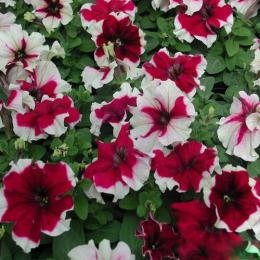
Petunia came into garden culture back in the 18th century. With its variety of shapes, flower colors, and unpretentiousness, it instantly won over lovers of decorative designs for gardens, flower beds, and balconies. Multi-colored petunia grandiflora is a leader among flower growers.
Content:
- Biological description
- Popular grandiflora petunias
- Growing and care
- Diseases and pests of petunia grandiflora
Biological description
Petunia herbaceous plant from the nightshade family, a close relative of tobacco. It grows naturally in South America:
- Paraguay
- Brazil
- Bolivia
- Uruguay
- Argentina
More than 100 species and hybrid forms are known; they can be either annual or perennial. Basically, varieties and hybrids were developed by crossing axillary petunia and violet petunia.
Stems are erect or creeping, from 20 cm to 80 cm long, with dense branching. The leaves are pubescent, whole-cut, of different sizes. The flowers are large, simple or double, and may have a strong strong odor. The shape of the flowers is a funnel of five petals. Color - varied: white, pink, purple.
Petunias can be divided into groups according to size and number of flowers:
- petunias grandiflora: large-flowered, very large flowers, few in number
- floribunda petunias: the size of the flowers is average, their number is also average
- petunias multiflora: the flowers are small, but due to their abundance, they completely cover the bush
Form hanging petunias pendula also differs in size and number of flowers.Regardless of the size and shape of the bush, the flowers can be simple or double. The variety of shapes makes petunia attractive for garden design and decorating loggias.
Forms of large-flowered petunias
Large-flowered petunias are suitable for growing in flower beds, containers, and pots. Indispensable when decorating terraces, loggias and balconies. The grandiflora group of petunias is very numerous. Conditionally can be divided into subgroups:
- low petunias, bush height no more than 30 cm
- fringed petunias, bush height up to 65 cm, flowers with fringe around the edges
- double petunias, height up to 60 cm, full flowers
- the most excellent petunias, height up to 75 cm, flower diameter 12 cm
They can combine several characteristics at the same time, for example, petunia is fringed, terry, low.
Significant disadvantage: large flowers are easily damaged in adverse weather conditions. Large flowers of petunia grandiflora, soaked from rain and damaged by the wind, lose all decorativeness. To avoid loss of attractiveness, it is more convenient to grow in containers and pots, which can be moved to closed terraces and verandas in bad weather.
Popular grandiflora petunias
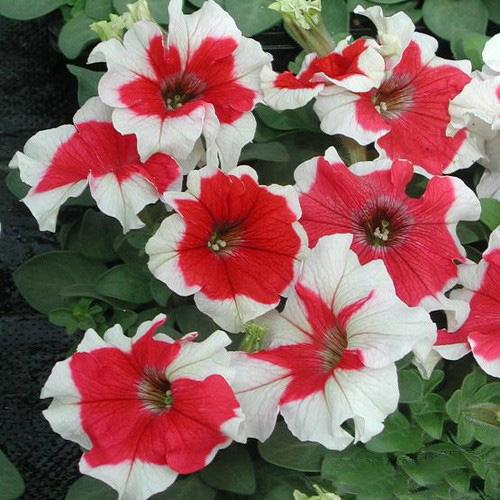
- Petunia Picotea - early petunias grandiflora, flowers up to 8 cm in diameter, flowers red, blue, purple with a wide white border along the edge. Blooms in the first ten days of June
- Petunias Ultra - later in flowering, large-flowered, low-growing. The flowers are white, pink, purple, bicolor and variegated. Size up to 8 cm in diameter. Looks great as a border plant, as well as in hanging pots. Flowering time: from the first ten days of July until frost.
- Petunia Triumph is a giant among giants, the diameter of the flowers exceeds 15 cm, the flowers are wavy or fringed, early blooming, the flowering period lasts until the first negative temperatures. Flowers range from white to dark burgundy. Excellent petunias for growing in containers and hanging pots.
- Petunias of the Mystikal series are a fashionable direction of black and bicolor large-flowered petunias. So far it consists of black petunia Black Velvet and black and yellow petunia Phantom.
- Black Velvet: The first true black grandiflora petunia. A bush with straight, tall shoots that tolerates pruning well. Suitable for pots and containers. Flowering is long lasting.
- Phantom: on a black background - a yellow five-pointed star in the center, the petals of large flowers are velvety.
Seedlings of petunias Black Velvet and Phantom can already be purchased in Russia.
New items for the season:
- Green Picasso: green flowers with pink centers
- Midnight Eclipse: Blue flowers with light green border
- Harmony: ruffled flower, delicate pink with a lilac pattern in the center
- Kan Kan: bright scarlet flowers with a yellow-cream center
Growing and care
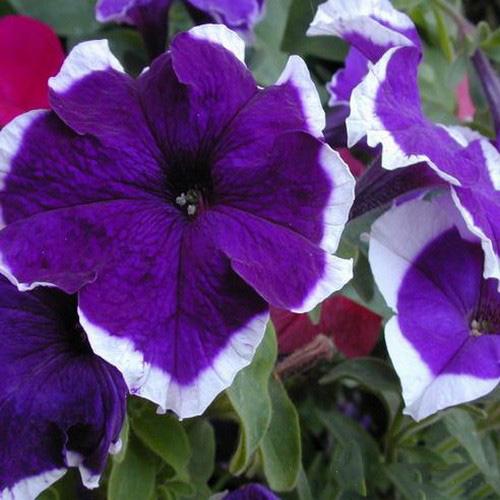
For full decorative flowering of petunias, you need to get seedlings. To do this, seeds mixed with soil are sown in containers or mini greenhouses filled with prepared soil in late February - early March. After spreading evenly over a well-moistened surface, cover with a layer of loose, sifted earth 1 cm thick. Cover with glass.
Germination occurs at a temperature not lower than 20 degrees Celsius. In terms of its technology, growing petunia seedlings has much in common with growing tomato and pepper seedlings. On the seventh or eighth day the first shoots appear.With daily moderate moistening by spraying and uniform sunlight, after five to six days the first leaf appears and the glass is removed.
Planting in open ground or transplanting into cache-pots and pots, begins in the second - third ten days of April. You can also purchase ready-made seedlings in specialized stores. For growing in the garden, it is better to choose well-lit areas with neutral soil, apply humus and complex fertilizer in advance.
Place planting holes for petunia grandiflora at a distance of at least 30 cm from each other. Place the plant at the bottom of the hole, carefully cover the roots with soil, lightly compact it, and water it with water. After planting and watering, mulch the root zone with humus and peat soil. This will protect the plant from possible frosts. If grandiflora petunia is planted in the ground on April 20, the first flowers will open around the end of June - early July. In dry weather, additional watering is required.
Diseases and pests of petunia grandiflora
Blackleg is a fungal disease that occurs when the soil is overcrowded, waterlogged, or acidic. The flower stem darkens in the root zone, becomes soft, and the plant dies. If detected, all damaged plants must be removed from the adjacent soil. After this, treatment is carried out with fungicides, for example the biological product "Fitosporin".
Powdery mildew is a fungal disease that occurs when there is high humidity and temperature changes. A light gray coating appears on the leaves. Affected parts of the plant must be removed immediately. The plant is sprayed with sulfur preparations, and the top layer of soil can also be removed.
Petunia is susceptible and pest attacks:
- slugs
- aphids
- spider mite
- whiteflies
Pests can be destroyed by timely spraying with ready-made insecticidal preparations. It is advisable to purchase seeds, seedlings of petunia grandiflora, and care products in specialized stores, including online.
The subtleties of growing petunias on video:
Interesting information about the vegetable garden

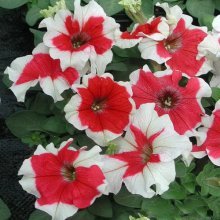
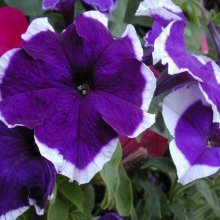
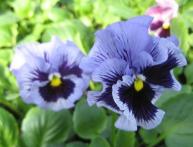
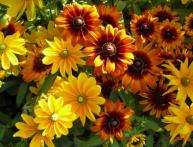

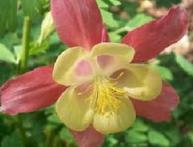
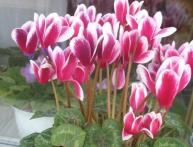
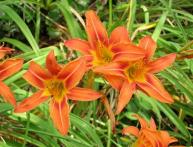
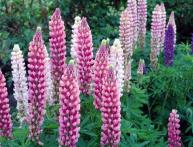
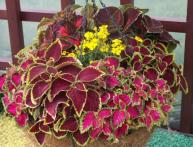
Comments
Truly petunia is a garden decoration. Even the most common self-seeding flower blooms all summer. No matter how much I tried to grow petunia at home with seedlings, I couldn’t. You have to buy seedlings already.